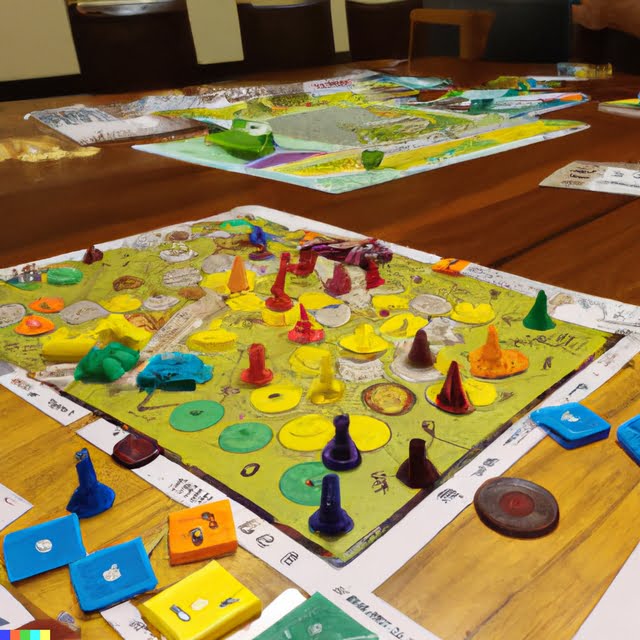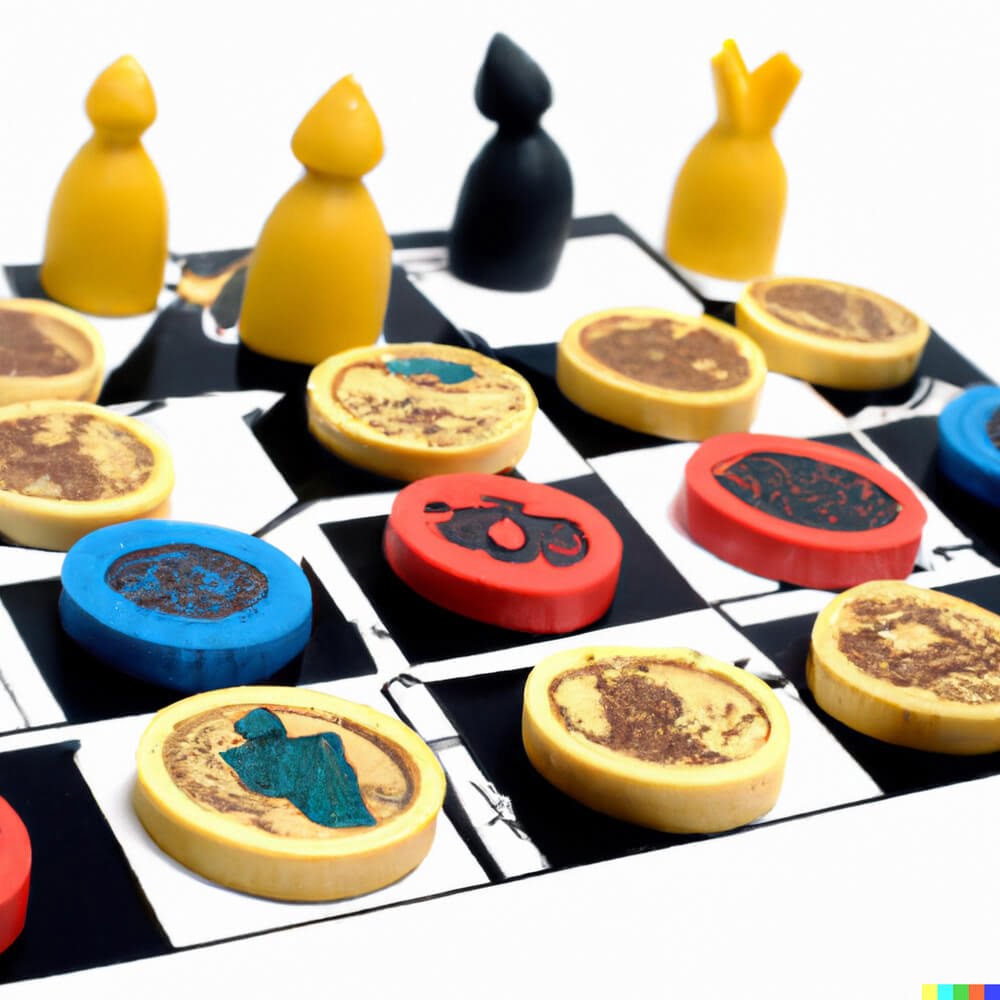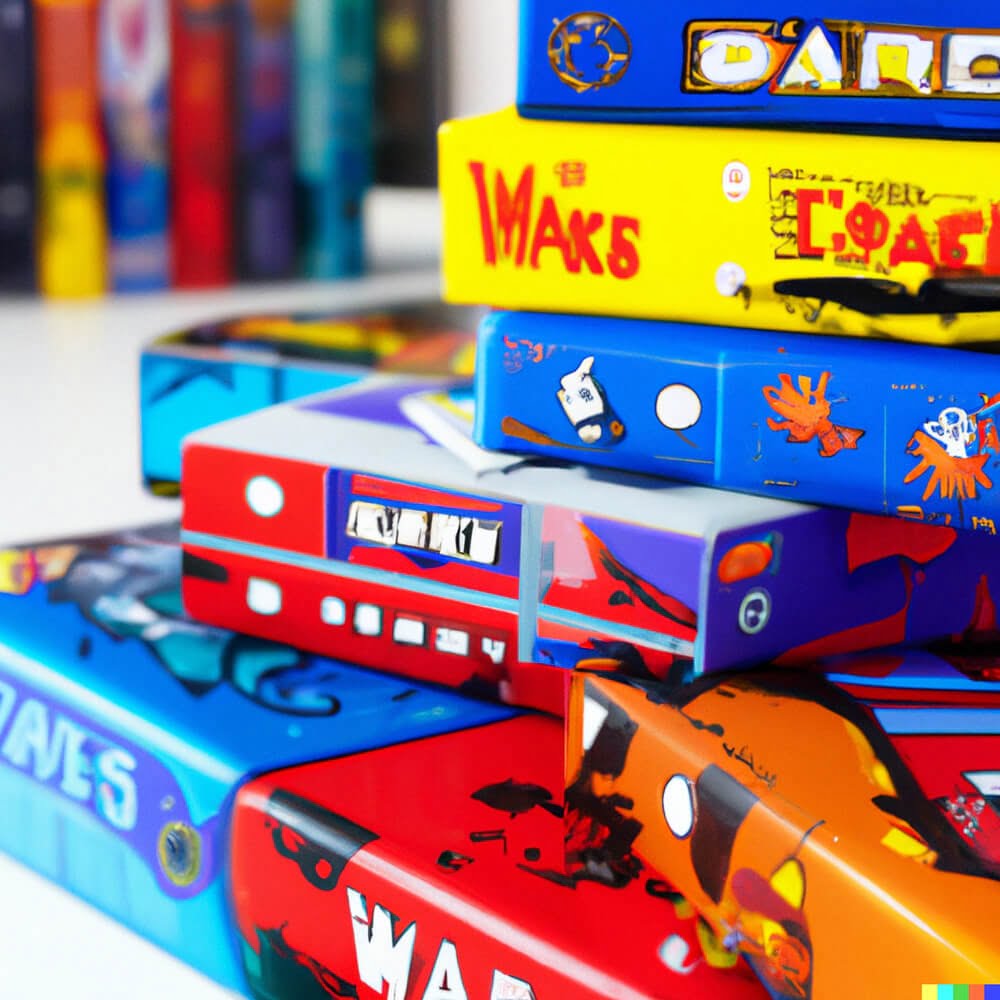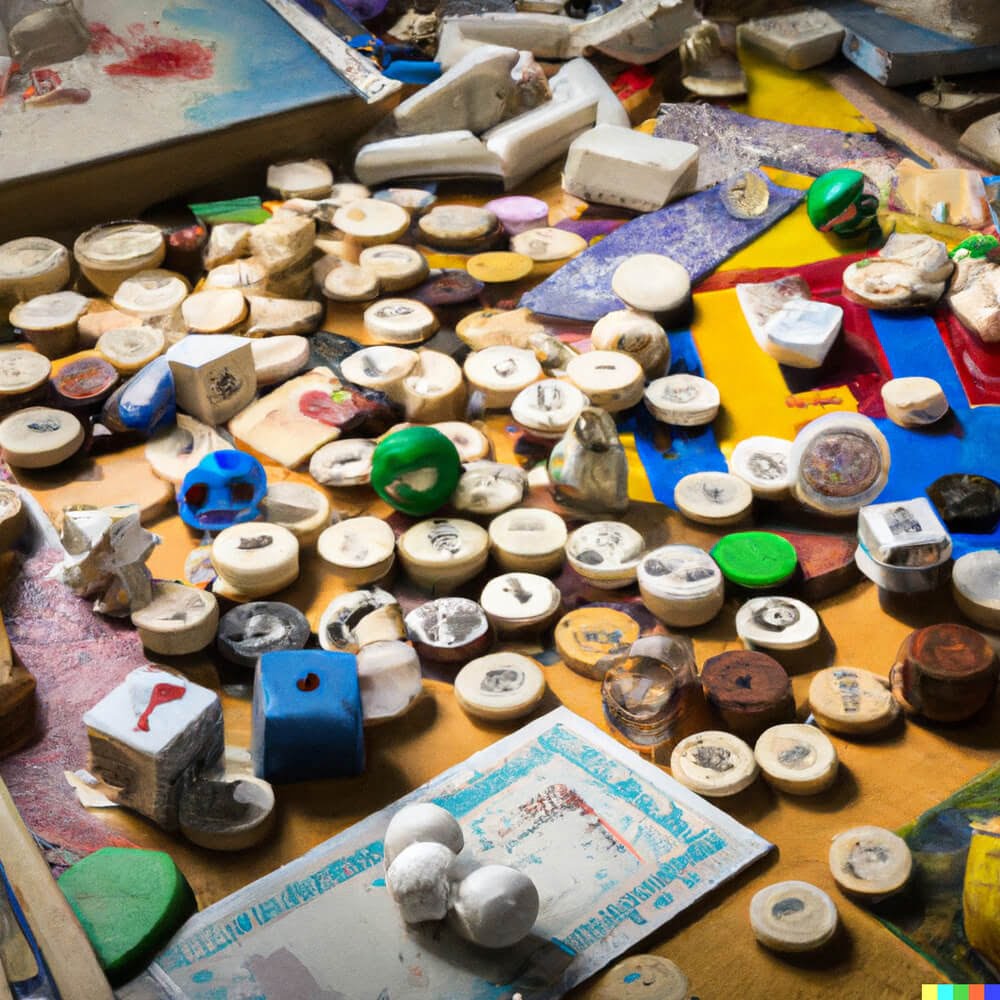Introduction
Making your own board game online can be an incredibly fulfilling experience, no matter how old or young you are. By taking the time to create your own handmade game, you will be providing hours of entertainment for family and friends. You can also have a sense of real ownership and pride over the unique set of rules you’ve created, as well as the design of the gameplay itself. It’s fun, educational and often just good old-fashioned family fun.
Below are some steps that can help guide you through the process of making your own board game online:
1. Choose Your Theme – The first step in creating your own board game is choosing a theme in which it will be based on. This could revolve around anything you find interesting – maybe a certain topic of history or it could even be a unique setting that you made up yourself! Consider what type of mood or atmosphere would best draw players into the game and help them stay immersed throughout its duration.
2. Establish Rules And Objectives – After choosing a theme for your online board game, it’s important to establish rules and objectives that the players need to adhere to during their playtime. Decide how many turns each player will get before it’s their opponents turn and where they must move pieces around on a grid-like map (or something more abstract). Also make sure to provide clear win/lose conditions for either side after all has been said and done!
3.Create Game Pieces – Now it is time to create any necessary player pieces and props that go along with your unique board game rules and objectives. Consider what type of resources they might need access to while playing or if they require any luck-based elements such as dice or cards etc… All these components should blend perfectly into whichever creative outlet you chose when establishing mode earlier on!
4. Test Play – Once everything is assembled, test out your newly created work before releasing it into public domain! Gather several willing participants who can reasonably give serious feedback on how balanced or enjoyable they felt during gameplay; modify accordingly afterwards if needed!
Your premise and Theme
When you create a board game online, it is important to start with the premise and theme. This sets the foundation of your game and how it will be played. It will determine what types of pieces you include, how to make the board, and other elements that will contribute to making it successful. Consider what type of conflict or challenge players should overcome, in addition to the theme of your game. Once you have decided on these two components, begin creating the components of your game such as boards, pieces, cards and dice. Select artwork that adds visual appeal and creates a strong impression for your players. Research game mechanics such as ‘action points’ or ‘inventory systems’ for inspiration when designing player movement and turn taking strategies. Incorporate rules for game play such as “actions that generate rewards” or “limit on number of resources used” to ensure a balanced competitive game environment for participants. Finally take time to playtest your game with friends and family so that any kinks can be worked out before launching officially in an online forum!
Selecting a Platform
When you want to create your own board game online, the first step is selecting a platform. There are several platforms available that you can use, such as tabletop simulator, Board Game Arena and Tabletopia. Research them all and explore the different features they offer. Each platform provides something unique and has different capabilities. Look into their user forums to read impressions and experiences from people who have already used them, as well as take advantage of customer support should you need help with getting started with the process. You can also look at other websites dedicated to the gaming community to get feedback on the best platforms for making your own board game online. Finally, look into pricing options for each of these platforms to make sure that you’re getting the services that best fit your budget.
Refining your Game
Designing the user interface for your board game is one of the most important aspects of creating a successful board game. The user interface should not just be aesthetically pleasing but also easy to navigate and understand. It should contain clear directions for setup, rules, and gameplay. Consider using icons or pictures to represent different options or clicks so that even young players can understand what to do. When designing your artwork think about the overall theme you are aiming to create with your game as this will help you decide which elements would work best together. Finally, when it comes to crafting the rules of the game, ensure they make sense and are well written so that players can easily follow them while playing. Keep in mind that there should be some level of strategy involved; you want to create an enjoyable experience while still presenting a challenge!
Crafting Your Mechanics
Creating board games online can be an incredibly rewarding and fulfilling experience. Developing a game of your own, with custom mechanics and rules that you create and modify to suit the needs of your unique design, can make it feel like you are playing a living, breathing world. In this section, we will provide some tips on how to proceed in creating a dynamic and enjoyable gameplay experience.
Start by brainstorming some ideas for the game’s theme, setting, characters, and objectives. Once these have been decided upon it is time to move onto mechanics. Get creative! Consider what type of approach you want the players to take: strategy-focused or luck-based? What types of actions should players be able to perform? Knowing what actions the player will take is important because it determines which pieces will be necessary for the game.
Now that the mechanics are in place you need to decide on how resources are managed. You could choose a zero sum game where there is a finite amount of resources for players; alternatively you could choose an economy based system where players contribute or build up resources over time from their actions. This decision affects many aspects including how players win or lose; therefore it requires careful consideration before implementation.
A major component of any great board game is its balance between complexity and appeal ” are there enough rules and incentives to keep the players’ attention while still making sure battles don’t become tedious? Think critically about all components of play such as turn duration, victory conditions, movement points etc., ensuring that they all interact properly in order create an interactive yet not frustratingly complex experience.
Finally, carefully consider any artwork accompanying your game – whether illustrations in rulebooks or tokens – as this contributes heavily to creating an immersive experience for your players. If necessary add detailed instructions so your game can live up to its full potential! And most important listen closely to feedback from those who try out your creation; after all no matter how much thought has gone into crafting out a fantastic experience ” it only counts if people actually enjoy playing it!
Crafting Your Puzzles
Creating puzzles for your online board game can be a great way to make the play experience more engaging and stimulating. The possibilities are nearly endless when it comes to creating puzzles. One type of puzzle is called a maze. This involves mapping out different paths players can take to ultimately move through the game board landscape, look for items, or traverse obstacles. You can create additional challenges within the mazes, such as requiring players to find specific items before being able to open doors or get past locked gates. Additionally, by using penalty squares within the mazes, you could have them punished with points or setbacks if they misspeak an answer or choose incorrectly at certain junctures within their journey.
Another creative way of making a fun and stimulating puzzle for your online board game is by constructing riddles. These can be verbal conundrums that players need to answer correctly in order to proceed onto the next challenge on their journey. Additionally, you want to consider incorporating trivia, math problems or other types of exercises that require player input and thought in order to complete tasks or acquire access rights throughout their exploration of the game board’s terrain. Last but not least, don’t forget about physical challenges! Players love interactive experiences so adding some physical activities such as questions that involve having participants draw an object from memory or even an exercise component like stretching or jumping jacks will really help spice things up during gameplay!
Beta Testing
Once you have made your own board game online, it is time to test out the game and make sure that it works. Beta testing is a crucial step in ensuring success with your board game. You can use friends, family, and other people from around the world to play test the game and report on what did or didn’t work. This can give you plenty of insight for improving the gameplay before launching it wider.
During bet-testing it’s important to analyse how players approach your game as well as determining any areas where they may become frustrated or confused . Some helpful ways to conduct this analysis can include quizzing testers on their experience after each playthrough and taking screenshots of the plays to assess. Additionally if data results are available such as win/lose percentages for individual rounds or overall games then these can be helpful to use in tweaking gameplay balance.
Making any necessary changes following beta testing is essential before going ahead with releasing it widely. It could be anything from small tweaks such as balancing conditions of victory points or even changing the core rules of the game – depending on feedback received during testing phase. Doing this will help make sure your board game is truly polished before submitting it for purchase or launching it onto a wider platform – such as when setting up an online store or website. Continued post-launch support will also help with customer retention by allowing you to address requests or complaints quickly and easily that come up after release. Implementing fixes over time ensure that all players are having a positive experience wherever possible widens reach and leaves them happy!
Professional Touches
Before you publish your board game online for the world to play, it’s important to add some professional touches that will make your game look polished. Color should be incorporated into the game. Choose colors that work well together and use them as an accent in certain areas of the board game such as tokens, cages, or squares. Even integrating a colored background can make a huge difference. Additionally, incorporating graphics can be a great way to draw attention to plan elements but make sure they are relevant and not overwhelming. Free resources like ClipArt can help with this. It is also wise to add a title page or front cover with all relevant information clearly displayed on it like title of the game and its objective(s). The rules of gameplay should also be clear and easy to read so that players understand how to play and enjoy the game without confusion. Finally, see if you can find someone who can professionally edit any text pieces that need it -it may pay dividends in terms of user experience!
Release and Maintenance
Releasing a board game online is the easy part, but making it work for you in the long-term requires an ongoing commitment. A successful game that consumers love involves constantly tweaking and improving the product, as well as maintaining customer support and updates.
Here are a few tips on how to keep your board game competitive:
1. Stay Responsive – Constantly receive feedback from users about their experience with your game and act accordingly. Staying engaged with customers to understand where their frustration lies should be a priority when making changes, as it may provide key insights into why improvements are needed.
2. Invest in Quality – Ensure that all components of your game such as rule books, cards, boards etc, are of high quality and appropriate durability. This will ensure customers have a good user-experience which will encourage them to come back for more.
3. Promote Your Game – Have strategies in place ensure people know your product exists! This includes running campaigns on multiple channels and leveraging thought leaders to increase exposure organically. Additionally, create social media accounts that can share news of updates or sales with potential and existing customers alike!
Concluding Thoughts
Creating a board game online is an incredibly rewarding adventure and a great way to promote creativity and imaginative play. Now that you know the steps for how to make your own board game online, it’s time for you to bring all of your ideas together and create something truly unique. After all the hard work of designing and testing your game, don’t forget to celebrate your success and share it with friends, family or even publish your game online! Finally, be sure to keep up with what popular board games are out there so that you can stay inspired in your continuing creative endeavors!

I love playing all kinds of games – from classics like Monopoly to modern favourites like Ticket to Ride.
I created this blog as a way to share my love of board games with others, and provide information on the latest releases and news in the industry.





